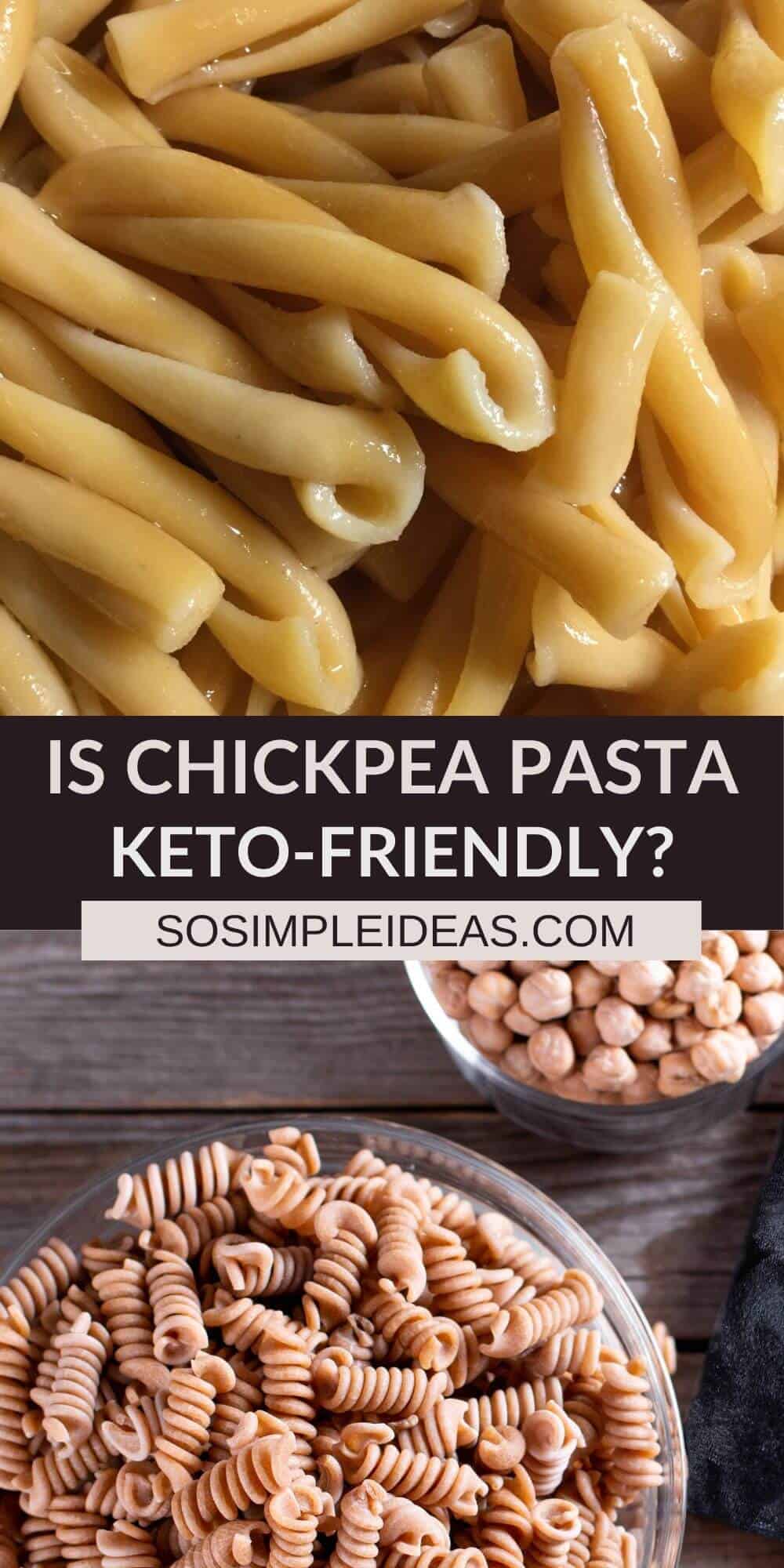Pasta has been a beloved food for centuries, enjoyed by people all over the world. It’s no wonder that pasta has become a staple in many diets. But what if you’re looking for a low-carb alternative to traditional pasta? Is chickpea pasta okay for those on a keto diet?
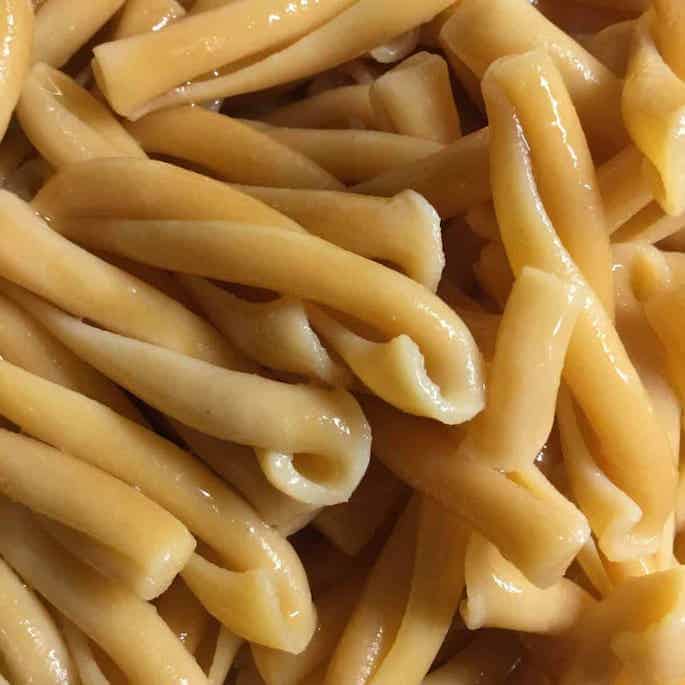
Chickpea pasta may be your first choice if you’re looking for a gluten-free alternative. It is made from chickpea flour which makes this dish healthier than many regular kinds of pasta.
Chickpea pasta is a healthy alternative to traditional wheat-based pasta, thanks to its high fiber and protein contents. These nutrients – along with magnesium – can be beneficial for heart health, digestion, and more.
However, if youfind yourself asking “Is chickpea pasta keto friendly?”, the quick answer is no. Chickpea pasta is NOT keto-friendly because it has enough carbs to kick a person out of ketosis. A better option is pasta made from lupin flour.
Table of Contents
Chickpea pasta ingredients
Before we delve deeper on chickpea pasta keto information, let’s analyze first the pasta’s ingredients. Chickpea pasta is made from ground chickpeas and is high in protein and fiber.
It has a slightly nutty flavor and a similar texture to traditional pasta. Chickpea pasta is also gluten-free and vegan-friendly.
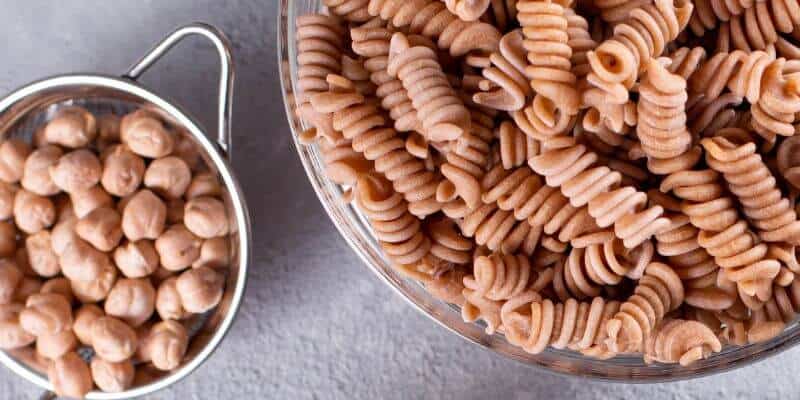
Chickpea-based pasta brands come in many forms. Some simply contain chickpea flour or whole chickpeas; others may also be made from rice flour and pea protein. Chickpea-based pastas that contain binders, like tapioca and xanthan gum, are also available.
Here are common ingredients used in creating chickpea pasta:
- Chickpea Flour – Also known as garbanzo bean flour, gram flour, and besan, it is made from dried chickpeas (whole garbanzo beans) and is a popular ingredient for gluten-free baking.
- Pea Protein – A high-quality source of protein extracted from yellow and green split peas, it can be used as a source of protein in a balanced diet.
- Tapioca Flour – This flour helps to make chickpea dough more pliable, which is especially useful when creating thin noodles and pasta shapes.
- Xanthan Gum – A popular food additive that’s commonly added to foods as a thickener or stabilizer, this substance quickly disperses into liquids, creating a viscous, stable solution.
Some brands of chickpea flour are pure, whereas others add ingredients like lentil flour and brown rice flour to make up for the flavor and consistency. You can find chickpea pasta in many shapes, including spaghetti, rotini, and penne.
How chickpea pasta is made
Learning how a food is made can give you some idea as to whether or not it is considered keto. If you’re wondering “Is chickpea pasta keto?”, let’s take a look at how it’s made.
Chickpea flour is a versatile ingredient that can be used in the preparation of a wide variety of dishes, sweet and savory. It’s an excellent alternative to white flour or semolina when making homemade pasta, which is suitable for people with celiac disease due to its total lack of gluten.
Here’s the steps that go into making chickpea pasta…
Grind dried chickpeas into powder
To make your own chickpea flour, start with a small packet of dried chickpeas. Then just chop them with a powerful blender or mill until they are reduced to powder.
Denature the flour
Do this by adding natural thickeners like xanthan gum. Dissolve the thickener directly in the water that will be used to knead the flour.
Prepare the dough
To make chickpea flour pasta, combine flour and water and knead well for a smooth dough. No gluten? No problem! Kneading helps your chickpea flour pasta come out smooth anyway.
Form the dough into a ball
After mixing the dough, form it into a ball and then set it aside in a bowl covered with plastic wrap for 10–15 minutes. This allows the dough to hydrate, making the pasta slightly stronger.
Shape up the pasta
Divide the dough into four to six pieces. This will make it easier to work with when rolling each section into pasta sheets. To shape chickpea pasta by hand, roll it with a rolling pin. To use a pasta machine, either roll the dough between two sheets of parchment paper or dust the pasta machine with chickpea flour so the dough doesn’t stick.
Dry out the pasta
Let the pasta dry on a clean tablecloth, or use a pasta drying rack for best results. Allow about an hour or two for drying.
Is chickpea pasta a good replacement for traditional pasta?
Chickpea pasta can be a great choice for a gluten-free alternative. This type of pasta is lower in carbs and calories than traditional pasta, so it’s a healthy pick!
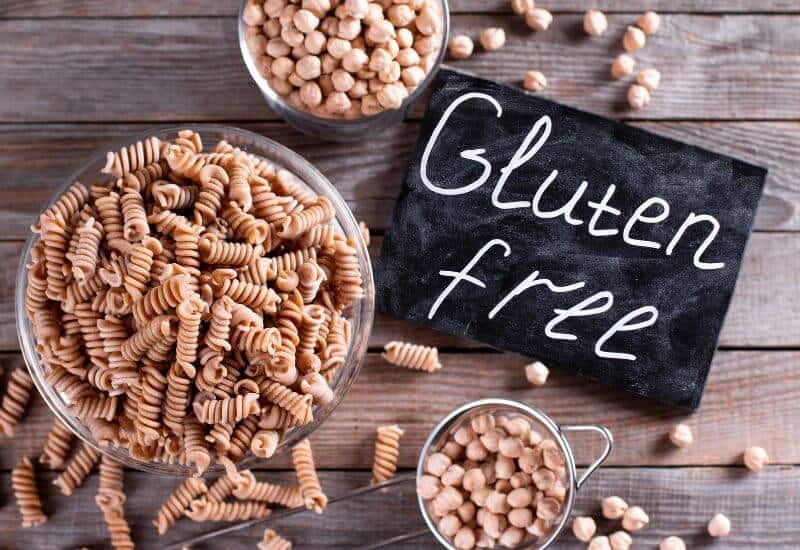
Its main ingredient, chickpeas are a nutrient-packed legume with protein, fiber, antioxidants and vitamins and minerals. As a result, chickpea pasta is a better choice than white or whole wheat pasta for people looking to get more protein, fiber, and iron in their diets.
Here are some reasons why you might want to eat chickpea pasta:
Provides an allergy-friendly alternative
For people with allergies to wheat, gluten, soy, dairy or eggs, chickpea pasta might be a welcome addition. It has simple ingredients and is very allergy-friendly.
Good for immune system
One serving of dried chickpea pasta (57 grams) contains 30% of the daily value of iron that you need. Iron is an essential nutrient that plays a role in the immune system and helps cells work properly.
Great source of protein
If you’re looking for a healthy, high-protein pasta alternative, chickpea pasta may be worth a try. A serving of 57 grams of dried chickpea pasta provides 14 grams of protein. Protein helps your body build muscles, heal wounds, and make important hormones and enzymes.
Helps maintain a healthy digestive tract
Chickpea pasta contains eight grams of fiber per serving (57 grams), helping to improve digestion and enhance your microbiome. Eating plenty of soluble fiber (found in vegetables, fruits and beans) and fermentable fiber (found in fermented foods) is the best way to promote optimal health by optimizing the function of gut bacteria.
Reduce the risk of developing chronic diseases
A 2016 study found that eating chickpeas, the main ingredient in chickpea pasta, may help prevent or offset the development of certain chronic diseases such as cardiovascular disease and type 2 diabetes. Chickpeas, hummus and other chickpea-based foods are good for you and can promote healthier functional outcomes such as in weight management based on the same study.
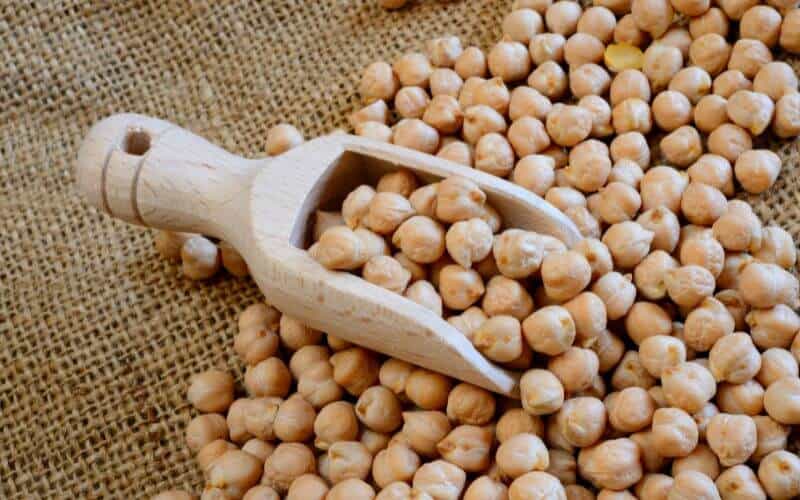
Is chickpea pasta keto
Chickpea pasta is rich in protein, fiber, and magnesium, which have been linked to numerous health benefits including boosting digestive health, lowering cholesterol levels, and reducing risk of heart disease, among others.
But if you’re following the ketogenic diet, the popularity of chickpea pasta might leave you wondering “Is chickpea pasta keto friendly?”
To settle your questions on if chickpea pasta is keto, the simple answer is NO. Chickpea pasta has too many carbs and will kick a person out of ketosis.
Chickpea pasta is not a low-carb choice. Each 2-ounce (57-gram) serving contains 32 grams of carbs according to Healthline. While chickpea pasta isn’t low in carbohydrates, it won’t spike your blood sugar as much as other high-carbohydrate foods, because it has fiber and protein in it.
For a good chickpea pasta keto alternative, try lupin flour pasta instead!
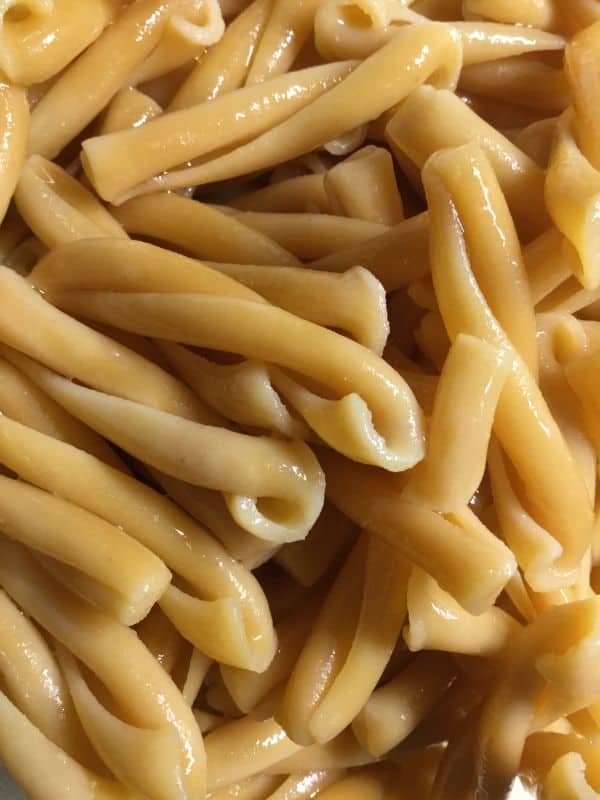
FAQs on is chickpea pasta keto friendly
If you don’t see your question answered below, don’t be afraid to let us know in the comments!
Keto friendly pasta includes spiralized vegetables, cabbage noodles, spaghetti squash, cauliflower, sprouts, hearts of palm, shirataki noodles, kelp noodles, and lupin flour pasta. For more information, you can check my blog post about these keto pasta alternatives.
To answer your question about if chickpea pasta is keto, the simple answer is NO. Chickpea pasta is high in carbohydrates as each 2-ounce (57-gram) serving contains about 32 grams of carbs. Thus, it can kick a person out of ketosis, which means that if you’re on a keto diet, you should avoid eating it.
Banza chickpea pasta is a great way to enjoy a lower carb, gluten free alternative to traditional pasta. However, it is still high in net carbs. Based on its nutrition information in its website, Banza pasta contains 35g of carbs per 2-oz serving. So, it’s a NO. Avoid Banza chickpea pasta on a keto diet.
Like many other legumes, chickpeas are not keto-friendly. They have too many carbs to make a nutritious addition to a ketogenic diet. Chickpeas have more than 20 grams of carbs in just half a cup.
Other Articles You May Be Interested In
If you’re interested in learning more about the ketogenic diet, here are some additional resources for you to check out:

